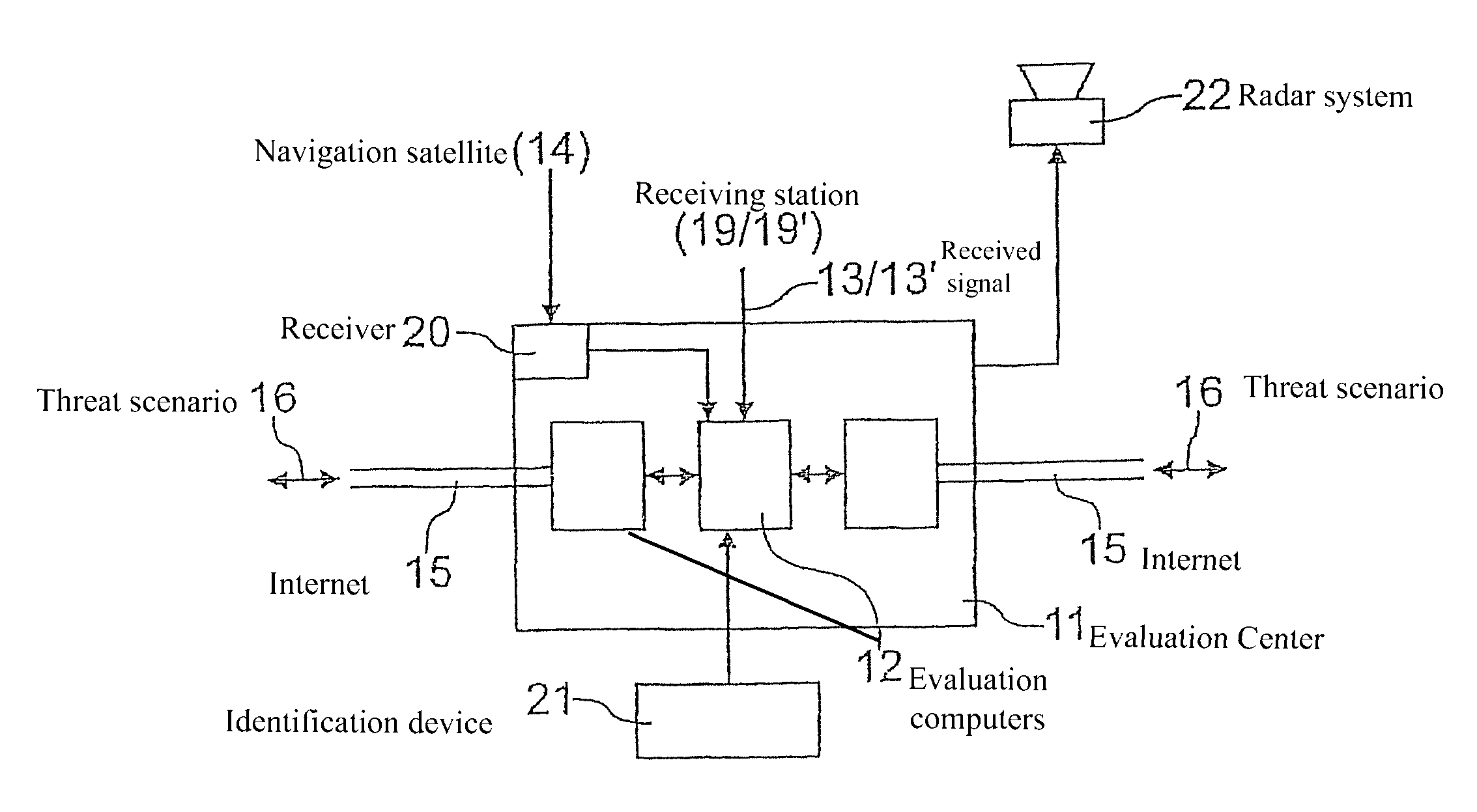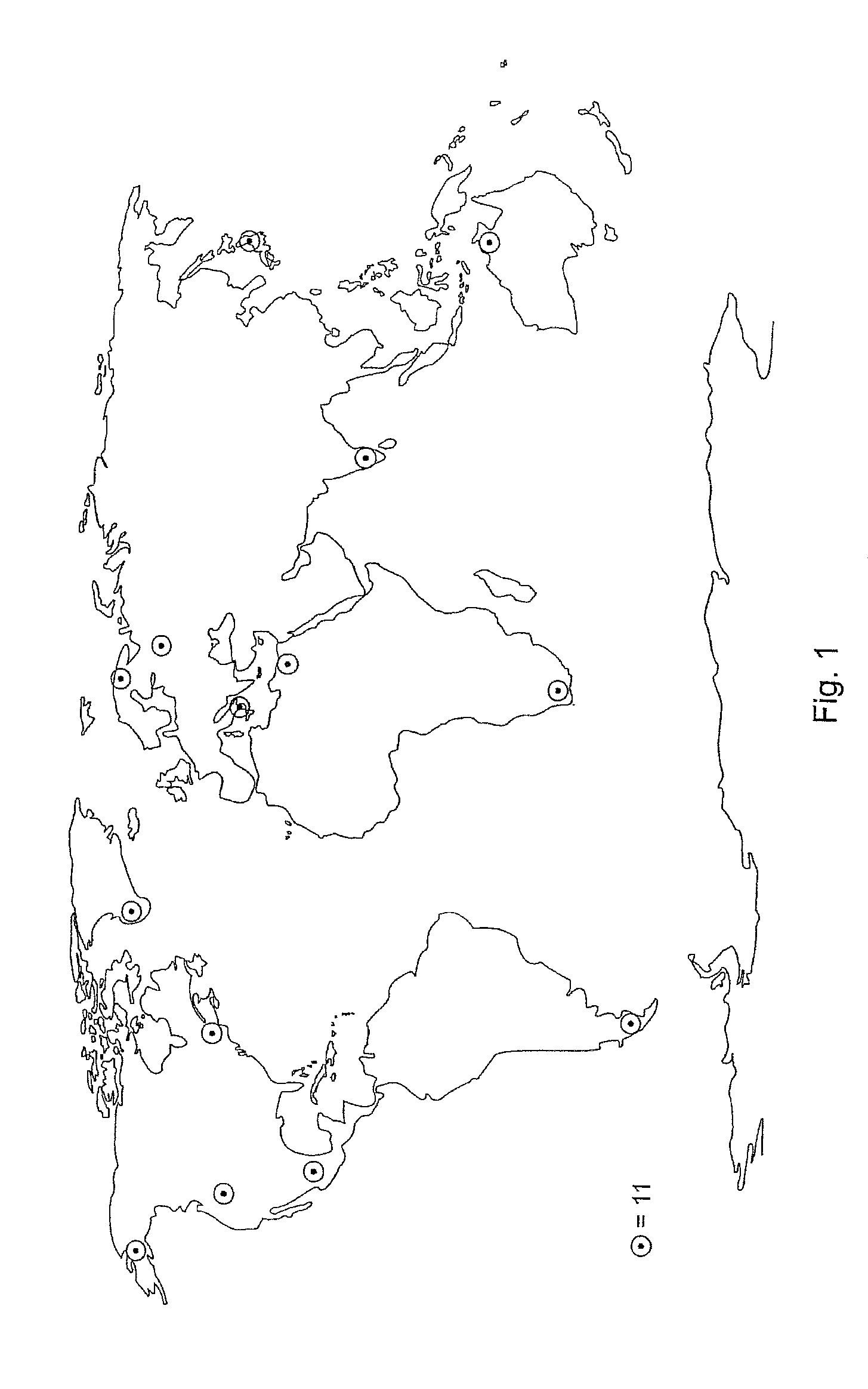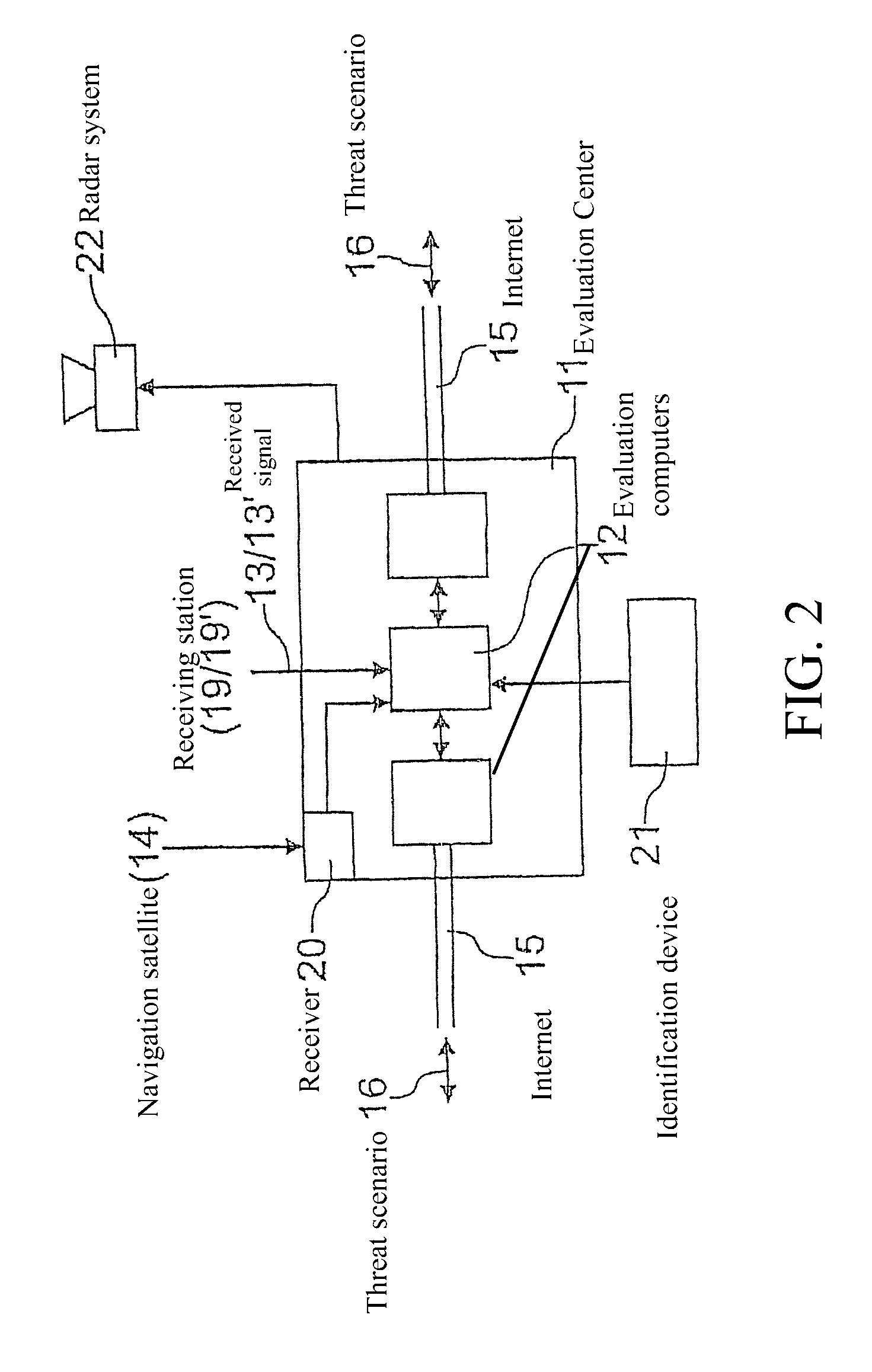Method for sensing a threat
a threat and detection method technology, applied in the field of threat detection, can solve the problems of not being able to draw a reliable conclusion about the existence of a threat, or even its signal failure, and achieve the effects of simple omnidirectional characteristic, increased validity of threat analysis, and extremely cost-effective operation
- Summary
- Abstract
- Description
- Claims
- Application Information
AI Technical Summary
Benefits of technology
Problems solved by technology
Method used
Image
Examples
Embodiment Construction
[0024]A virtually worldwide network comprising a relatively small number of evaluation centres 11 has locations, for example as shown in FIG. 1, in Alaska, on the west and east coasts of North America, in Mexico, Tierra del Fuego, Greenland, northern Finland, Russia, southern Italy, Egypt, South Africa, India, Japan and northern Australia. The evaluation centres 11 shown in FIG. 2 are fitted with evaluation computers 12 for actual received signals 13 from a plurality of navigation satellites 14 (FIG. 3) which are received at the same time and whose emitted signals are known, which are available for comparison with the disturbed received signals 13. The evaluation centres 11 are networked with one another via the Internet 15, in order to interchange typical threat scenarios 16 with one another. These threat scenarios 16 result from disturbances which are contained in the received signals 13 and are caused by potentially threatening entities 17 which may, in particular, be missiles on...
PUM
 Login to View More
Login to View More Abstract
Description
Claims
Application Information
 Login to View More
Login to View More - R&D
- Intellectual Property
- Life Sciences
- Materials
- Tech Scout
- Unparalleled Data Quality
- Higher Quality Content
- 60% Fewer Hallucinations
Browse by: Latest US Patents, China's latest patents, Technical Efficacy Thesaurus, Application Domain, Technology Topic, Popular Technical Reports.
© 2025 PatSnap. All rights reserved.Legal|Privacy policy|Modern Slavery Act Transparency Statement|Sitemap|About US| Contact US: help@patsnap.com



